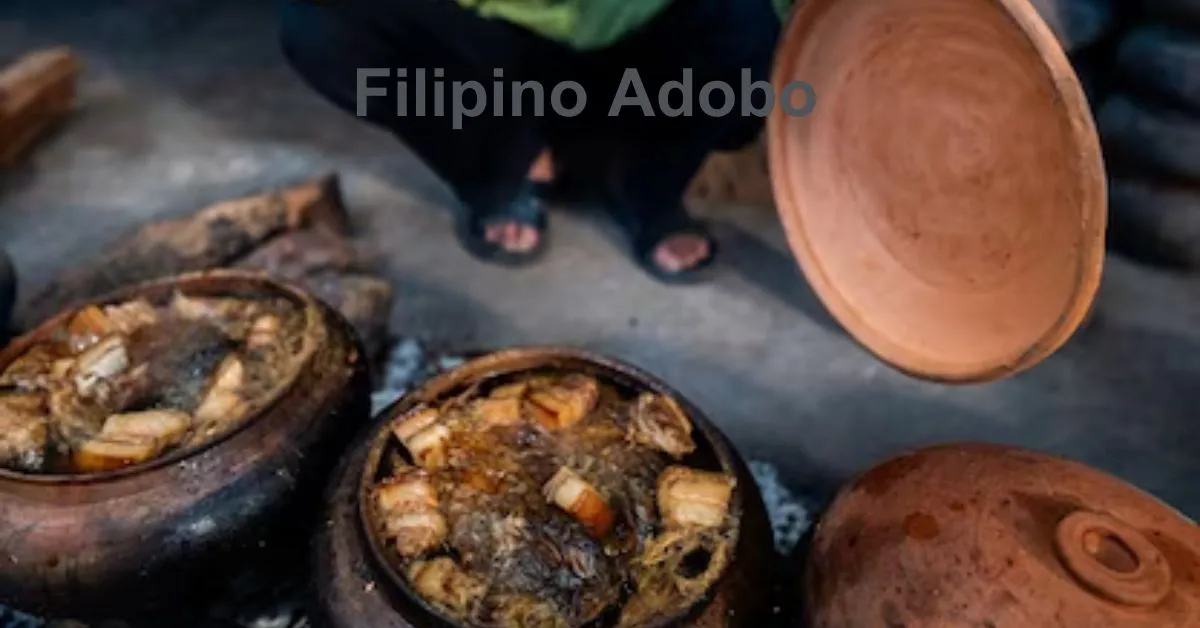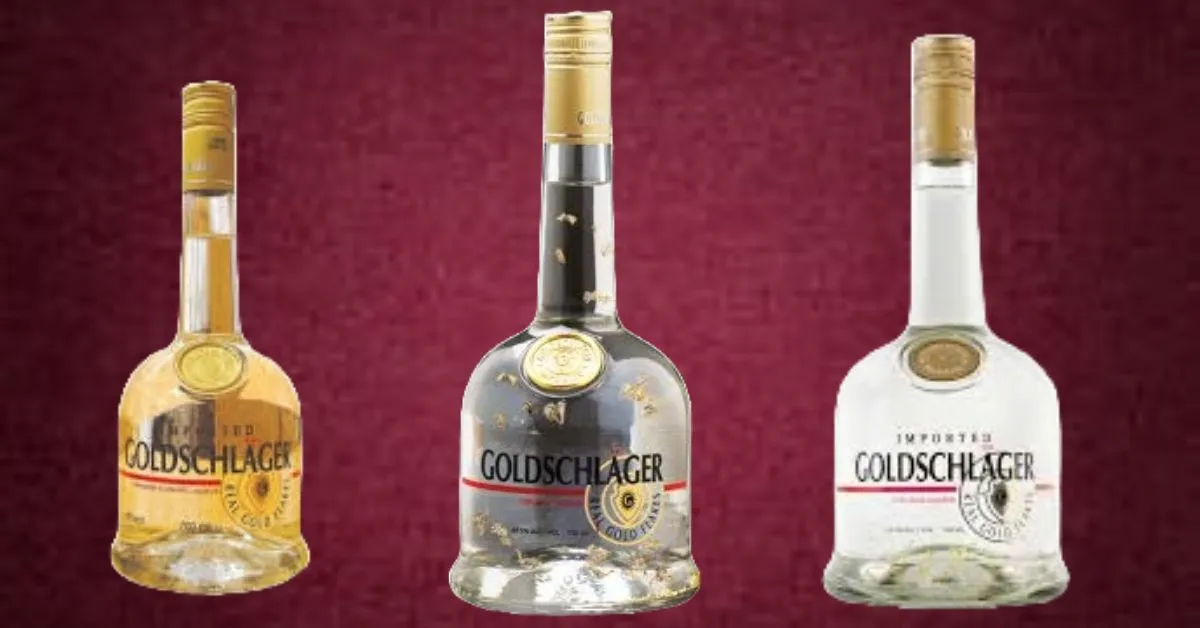Food & Drink
Filipino Adobo: A Culinary Journey through History and Culture

Food & Drink
Chinese Food Delivery Near Me: Exploring the Delightful World

Chinese Food Delivery Near Me, in today’s hectic world, when time is of the essence, many people turn to Chinese meal delivery services. Not only is it tasty, but Chinese cuisine also comes in a variety of flavours to suit a wide range of preferences. This article delves into the world of Chinese meal delivery, discussing its popularity and the causes that have contributed to its expansion.
The Popularity of Chinese Cuisine
Foodies all around the world have a soft spot for Chinese dishes. People from many walks of life gravitate towards it due to the wide variety of flavours, textures, and preparation methods it offers. Whether you’re in the mood for the nuanced flavours of Cantonese cuisine or the fiery flavours of Szechuan, you’ll find it in Chinese restaurants.
The Emergence of Chinese Food Delivery
Over time, we’ve gotten more sophisticated in our appreciation of Chinese food. We’ve graduated from the formality of dining in to the ease of takeaway and delivery Chinese cuisine. This change has been driven in large part by the proliferation of meal delivery apps and other online ordering platforms.
Benefits of Chinese Food Delivery
Getting Chinese cuisine delivered has several advantages. It’s not only about giving in to your hunger; it’s also about minimising the time and effort required to do so. In the privacy of your own home, you may savour your most-loved meals. In addition, Chinese food delivery services make it possible to order a broader selection of meals, satisfying both adventurous and fussy diners.
Finding the Best Chinese Food Delivery Near You
Finding a reliable Chinese food delivery service is essential when you have a need. To find Chinese restaurants close to you, try using a search engine or a meal delivery service. You may find the one that meets your preferences best by reading reviews and checking ratings. Think about whether you’d rather dine at a chain restaurant or support a mom-and-pop establishment.
Safety and Quality Assurance
Maintaining food quality and safety during transport is of utmost importance. In order to maintain the quality and freshness of your Chinese cuisine order, a reliable delivery service will take certain precautions. Because of this, you can be assured that the cuisine you receive will be just as delicious as if you were eating at home.
Online Ordering Process
It’s easy and straightforward to place an order for Chinese takeaway or delivery. The majority of dining establishments and food delivery services have user-friendly interfaces. Choose your meals, put them in your shopping basket, add any customizations and then pay. In most cases, you’ll have a few different shipping and payment methods to pick from.
Delivery Fees and Tips
Avoid unpleasant surprises when your item arrives by making sure you know the shipping costs ahead of time. As an added bonus, tipping the delivery driver an appropriate amount is both polite and effective.
Tracking Your Chinese Food Delivery
Order tracking in real time is a common feature of meal delivery services. With this function, you can anticipate when your meal will come and spend as little time as possible waiting.
Special Offers and Promotions
Some Chinese restaurants and delivery services provide discounts and other perks to customers who order from them on a regular basis. Discounts, combination meals and loyalty programmes might help you save money on your favourite Chinese takeaway.
Personalizing Your Chinese Meal
The opportunity to personalise your order is a big plus when buying Chinese cuisine online. Ingredients may be added or removed, spice levels can be adjusted, and special diets can be accommodated. This guarantees that you will receive the exact dish you ordered.
The Joy of Unboxing
It’s a thrilling moment when the Chinese takeaway you ordered finally arrives. The anticipation of opening the containers to reveal your tasty dinner is part of the fun. The aesthetic presentation of food in many takeaway and delivery containers is intended to elevate the eating experience.
Enjoying Your Chinese Meal
Make sure you have the correct setting for your Chinese food at home. Get everyone in the mood for a relaxing evening in or a fun get-together with the family. Enjoy the exquisite flavours that Chinese food has to offer by taking your time with each bite.
Beyond the Main Course
There’s more to Chinese food than just the main courses. The universe of Chinese appetisers, sides, and desserts is waiting to be discovered. They enhance the enjoyment of a meal in unique ways.
Conclusion
To sum up, ordering Chinese food online is an easy method to sample the region’s varied and delectable culinary offerings. Time is saved, a large selection of foods is available, and dietary restrictions and tastes may be accommodated. Chinese takeaway or delivery allows you to enjoy your favourite dishes without leaving the house.
FAQs
1. Is Chinese food delivery available in my area?
- Most likely, yes. Use food delivery apps or websites to check the availability in your location.
2. How do I ensure the food remains warm during delivery?
- Reputable delivery services use insulated packaging to keep the food hot. Additionally, consuming the food promptly upon arrival helps maintain its temperature.
3. Can I make special requests, such as extra spice or dietary preferences?
- Absolutely. When placing your order, you can usually add comments or make special requests, such as adjusting the spice level or specifying dietary needs.
4. Are there vegetarian or vegan Chinese food delivery options?
- Yes, many Chinese restaurants offer vegetarian and vegan dishes. You can easily find these options in the menu or by asking the restaurant directly.
5. How can I leave feedback on my Chinese food delivery experience?
- Most food delivery apps and websites allow you to rate and leave feedback on your order. This helps other customers and provides valuable input to the restaurant.
Food & Drink
Goldschlager: A Shimmering Legacy of Swiss Craftsmanship and Spirited Acquisition

Few drinks in the world of distilled spirits are as eye-catching as Goldschlager, the Swiss cinnamon schnapps enhanced with tiny bits of actual gold. With its distinct blend of taste and spectacle, Goldschläger has captivated customers’ attention all over the world since its launch in the 1990s. But underneath its glistening exterior is a long history of corporate acquisition, inventiveness, and skill. The history of Goldschläger, from its modest origins to its acquisition by business behemoths Diageo and then the Sazerac Company, is just as fascinating as the beverage itself.
Origins of Goldschlager:
The origins of Goldschlager can be traced back to Switzerland, a country renowned for its precision engineering and meticulous attention to detail. In the early 1990s, a visionary distiller sought to create a schnapps that not only tantalized the taste buds but also dazzled the eyes. Drawing inspiration from traditional Swiss craftsmanship, he infused a premium cinnamon schnapps with thin flakes of 24-karat gold, resulting in a beverage unlike any other. The name “Goldschlager” itself is a nod to the goldbeaters of old, craftsmen who meticulously hammered gold into thin sheets for use in art and decoration.
Craftsmanship and Quality:
Central to the allure of Goldschläger is its commitment to quality and craftsmanship. Each bottle is meticulously crafted using only the finest ingredients, ensuring a smooth and flavorful drinking experience. The addition of real gold flakes not only adds a touch of luxury but also contributes to the drink’s distinctive appearance and texture. Unlike imitation gold flakes used in other spirits, the gold in Goldschläger is genuine, reflecting the brand’s dedication to authenticity and excellence.
Consumer Appeal and Global Expansion:
From its inception, Goldschlager captivated consumers with its unique blend of flavors and eye-catching presentation. Its popularity quickly spread beyond Switzerland, gaining a devoted following in markets around the world. The drink’s shimmering gold flakes became synonymous with luxury and indulgence, making it a staple at upscale bars and nightclubs. Its appeal was not limited to connoisseurs; Goldschläger’s bold flavor and striking appearance appealed to a wide range of drinkers, cementing its status as a beloved spirit.
Acquisition by Diageo:
In 2018, Goldschlager underwent a significant transition when it was acquired by Diageo, one of the world’s leading producers of alcoholic beverages. The acquisition marked a new chapter in Goldschläger’s history, providing access to Diageo’s vast distribution network and marketing expertise. While some feared that the acquisition would dilute Goldschläger’s unique identity, Diageo remained committed to preserving the brand’s heritage and craftsmanship. Under Diageo’s stewardship, Goldschläger continued to thrive, reaching new markets and expanding its loyal customer base.
Transition to Sazerac Company:
Despite its success under Diageo, Goldschlager once again found itself at a crossroads in 2018 when it was sold to the Sazerac Company, a privately held American distiller. The acquisition represented a strategic move for Sazerac, allowing the company to diversify its portfolio and tap into the growing market for flavored spirits. While some questioned the wisdom of the sale, others saw it as an opportunity for Goldschläger to reach new heights under the guidance of a company known for its commitment to quality and innovation.
Looking to the Future:
As Goldschlager enters a new era under the ownership of the Sazerac Company, the future looks bright for this iconic spirit. With its rich history, commitment to quality, and unmistakable allure, Goldschläger is poised to continue captivating drinkers for generations to come. Whether sipped neat, mixed into cocktails, or simply admired for its shimmering beauty, Goldschläger remains a testament to the enduring appeal of Swiss craftsmanship and the timeless allure of gold.
Conclusion:
In the world of spirits, few beverages can rival the allure of Goldschlager. From its origins in Switzerland to its acquisition by industry giants Diageo and the Sazerac Company, the story of Goldschläger is as captivating as the drink itself. With its commitment to quality, craftsmanship, and innovation, Goldschläger continues to delight drinkers around the world, proving that sometimes the most extraordinary experiences come in the most unexpected packages. As we raise our glasses to toast the legacy of Goldschläger, we celebrate not only a spirit but a symbol of Swiss ingenuity, luxury, and the timeless allure of gold. Cheers to the shimmering legacy of Goldschläger!
Food & Drink
what beer is not owned by anheuser-busch

In a world, what beer is not owned by anheuser-busch dominated by big beer conglomerates, it’s refreshing to know that there are still independent breweries crafting unique and flavorful brews. As beer enthusiasts, it’s essential to explore beyond the familiar and discover what lies beyond the reach of giants like Anheuser-Busch. Let’s embark on a journey to uncover some of the notable beers that remain proudly independent.
Embracing Independence: Breweries Beyond Anheuser-Busch
While Anheuser-Busch may be synonymous with beer for many, it’s crucial to recognize the vibrant landscape of independent breweries that operate outside of its influence. These breweries prioritize quality, craftsmanship, and innovation, producing beers that reflect their passion and dedication to the craft.
One such brewery is Sierra Nevada Brewing Company, known for its commitment to sustainability and environmental stewardship. Founded in 1980 by Ken Grossman, Sierra Nevada has remained independent and family-owned, producing a wide range of acclaimed beers, including the iconic Sierra Nevada Pale Ale. With a focus on using high-quality ingredients and traditional brewing methods, Sierra Nevada continues to push the boundaries of craft beer while staying true to its roots.
The Craft Beer Revolution: Exploring Diversity
In recent years, the craft beer movement has exploded, giving rise to a diverse array of breweries and beer styles. From small-batch microbreweries to regional favorites, the craft beer scene offers something for everyone, free from the constraints of corporate ownership.
One standout brewery in this diverse landscape is Dogfish Head Craft Brewery, founded by Sam Calagione in 1995. Known for its adventurous approach to brewing and willingness to experiment with unconventional ingredients, Dogfish Head has carved out a niche for itself in the craft beer world. From its off-centered ales like the 60 Minute IPA to its inventive collaborations with other breweries and culinary experts, Dogfish Head continues to push boundaries and challenge expectations.
Exploring Beer Diversity: Styles and Flavors
Beyond the breweries themselves, it’s essential to celebrate the diversity of beer styles and flavors available outside of the Anheuser-Busch portfolio. From hop-forward IPAs to rich and complex stouts, the world of craft beer offers a wealth of options for discerning drinkers.
One style that has gained popularity in recent years is the hazy IPA, known for its juicy hop character and smooth mouthfeel. Breweries like Tree House Brewing Company and Trillium Brewing Company have garnered acclaim for their mastery of this style, producing hazy IPAs that are bursting with tropical fruit flavors and aromatic hop notes.
Supporting Independent Beer: The Importance of Choice
As consumers, our choices have power, and where we choose to spend our beer dollars can make a significant impact on the brewing industry. By supporting independent breweries and seeking out beers not owned by Anheuser-Busch, we can help preserve the diversity and innovation that make craft beer so special.
One way to support independent beer is to seek out local breweries and taprooms in your area. These small-scale operations often rely on community support to thrive and can offer a unique and personalized beer-drinking experience. Whether you’re enjoying a pint at the brewery’s taproom or bringing home a growler to share with friends, every purchase directly contributes to the success of independent beer.
Conclusion: Celebrating Independence in Beer
The world of beer is vast and diverse, with countless breweries and beer styles waiting to be explored. While Anheuser-Busch may loom large in the beer industry, there are plenty of independent breweries producing exceptional beers that are well worth seeking out.
From the innovative offerings of breweries like Sierra Nevada and Dogfish Head to the wide range of beer styles available in the craft beer scene, there’s something for everyone to enjoy outside of the Anheuser-Busch portfolio. By supporting independent beer and celebrating diversity in brewing, we can ensure that the craft beer movement continues to thrive for years to come. Cheers to independence and the delicious beers that embody it!
-

 Technology8 months ago
Technology8 months ago社工库: Navigating the Depths of Social Engineering Databases
-

 News6 months ago
News6 months agoFinding the Truth Behind a Trails Carolina Death
-

 Education7 months ago
Education7 months agoFortiOS 7.2 – NSE4_FGT-7.2 Free Exam Questions [2023]
-

 Technology3 months ago
Technology3 months agoAmazon’s GPT-55X: A Revolutionary Leap in AI Technology
-

 History & Tradition9 months ago
History & Tradition9 months agoλιβαισ: Unraveling Its Mystique
-

 Education8 months ago
Education8 months agoExploring the Significance of 92career
-

 News8 months ago
News8 months agoClaudia Goldin: A Trailblazer in Understanding Gender Pay Gap
-

 Entertainment7 months ago
Entertainment7 months agoFree Tube Spot: Your Gateway to Endless Entertainment












